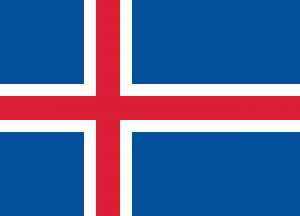Language/Icelandic/Grammar/Adjective-Agreement
In this lesson, you will learn how to correctly use adjectives in Icelandic, including agreement with gender, number, and case of the nouns they modify. Adjectives play an important role in Icelandic sentence structure and are commonly used in everyday communication. Mastering adjective agreement is crucial to improving your proficiency in Icelandic.
Adjectives in Icelandic
Adjectives are a part of speech that modify or describe a noun. In Icelandic, adjectives are placed before the noun they modify.
Types of Adjectives
There are two main types of adjectives in Icelandic: strong and weak.
Strong adjectives do not change form no matter what word they modify. For example, the adjective "hár" (tall) is always "hár", no matter if it modifies a masculine, feminine, or neuter noun.
Weak adjectives, on the other hand, may change their form based on the gender, number, and case of the noun they modify.
Adjective Agreement
In Icelandic, adjectives must agree in gender, number, and case with the noun they modify. This means that the ending of the adjective changes depending on the gender, number, and case of the noun.
For example, let's take the weak adjective "fallegur" (beautiful). If we want to use this adjective to describe a masculine singular noun like "maður" (man), we add the appropriate ending "-ur" to make it agree with the noun. Therefore, we have "fallegur maður" (beautiful man).
Here is a breakdown of the adjective endings for each gender, number, and case:
Masculine Nouns
| Case | Singular | Plural |
|---|---|---|
| Nominative | -ur | -ir |
| Accusative | -an | -a |
| Dative | -um | -um |
| Genitive | -s | -ra |
For example:
- "Fallegur" (beautiful) + "maður" (man) = "Fallegur maður"
- "Fallegir" (beautiful) + "menn" (men) = "Fallegir menn"
- "Fallegan" (beautiful) + "hættumenn" (dangerous men) = "Fallegan hættumann"
- "Fölk" (people, neuter) + "fallegir" (beautiful) = "Fólk fallegir"
It's important to note that masculine singular nouns in the accusative and dative cases add the ending "-an" and "-um", respectively. The genitive case for masculine nouns adds the ending "-s".
Feminine Nouns
| Case | Singular | Plural |
|---|---|---|
| Nominative | -ur | -ar |
| Accusative | -a | -ur |
| Dative | -ri | -um |
| Genitive | -rar | -ra |
For example:
- "Falleg" (beautiful) + "kona" (woman) = "Falleg kona"
- "Fallegar" (beautiful) + "konur" (women) = "Fallegar konur"
- "Fallega" (beautiful) + "litlu stelpurnar" (the little girls) = "Fallega litlu stelpurnar"
- "Borg" (city, feminine) + "falleg" (beautiful) = "Borg falleg"
Note that feminine singular nouns in the accusative case add the ending "-a", while feminine singular nouns in the dative case add the ending "-ri". The genitive case for feminine nouns adds the endings "-rar" for singular and "-ra" for plural.
Neuter Nouns
| Case | Singular | Plural |
|---|---|---|
| Nominative | -t | - |
| Accusative | -t | - |
| Dative | -u | -um |
| Genitive | -s | -a |
For example:
- "Fallegt" (beautiful) + "hús" (house) = "Fallegt hús"
- "Falleg" (beautiful) + "blóm" (flowers) = "Falleg blóm"
- "Fallegu" (beautiful) + "höfnin" (the harbor) = "Fallegu höfnin"
- "Hus" (house, neuter) + "fallegt" (beautiful) = "Hús fallegt"
Neuter singular nouns and plural nouns in all cases don't add any suffixes. The genitive case for neuter nouns adds the ending "-s".
Comparison of Adjectives
In Icelandic, there are three ways to compare adjectives: comparative, superlative, and equal comparison.
Comparative and Superlative
To form the comparative and superlative degrees of adjectives, Icelandic uses suffixes instead of the English words "more" and "most".
To form the comparative degree of an adjective, simply add the suffix "-ari" to the end of the adjective. For example, "fallegur" (beautiful) becomes "fallegari" (more beautiful).
To form the superlative degree, add the suffix "-astur" to the end of the adjective. For example, "fallegur" (beautiful) becomes "fallegastur" (most beautiful).
Note that when forming the comparative or superlative degree of adjectives, the adjective agrees with its noun in gender, number, and case, just like in regular adjective agreement.
Equal Comparison
To express equal comparison of adjectives in Icelandic, use the word "jafn" (as) or "sem" (like). For example, "fallegur eins og sólin" (beautiful like the sun).
Exceptions to Adjective Agreement
Like in any language, there are exceptions to the rules of adjective agreement in Icelandic. These include compound words, loanwords, and adjectives that end in "-ur".
Compound words are words that combine two or more words to form one word. In some cases, the adjective only agrees with the last word in the compound. For example, "sólarfallegur" (beautiful like the sun) only agrees with the noun "sólar" (sun) and not with "fallegur" (beautiful).
Loanwords, or words borrowed from other languages, may also not follow the rules of Icelandic adjective agreement. For example, the French loanword "franska" (French) doesn't change its form no matter the gender and number of the noun it modifies.
Finally, adjectives ending in "-ur" in their stem form may also not follow the regular rules of adjective agreement. In some cases, the ending "-a" is used instead of "-ur" in some cases. For example, "lýðræðislegur" (democratic) becomes "lýðræðislega" in its plural form regardless of the gender of its noun.
Conclusion
In this lesson, you have learned how to use adjectives in Icelandic, including agreement with gender, number, and case of the nouns they modify. You also learned the different ways to compare adjectives and the exceptions to the rules of adjective agreement in Icelandic. Adjectives are an essential part of Icelandic sentence structure and mastering their use is crucial to improving your proficiency in Icelandic.

